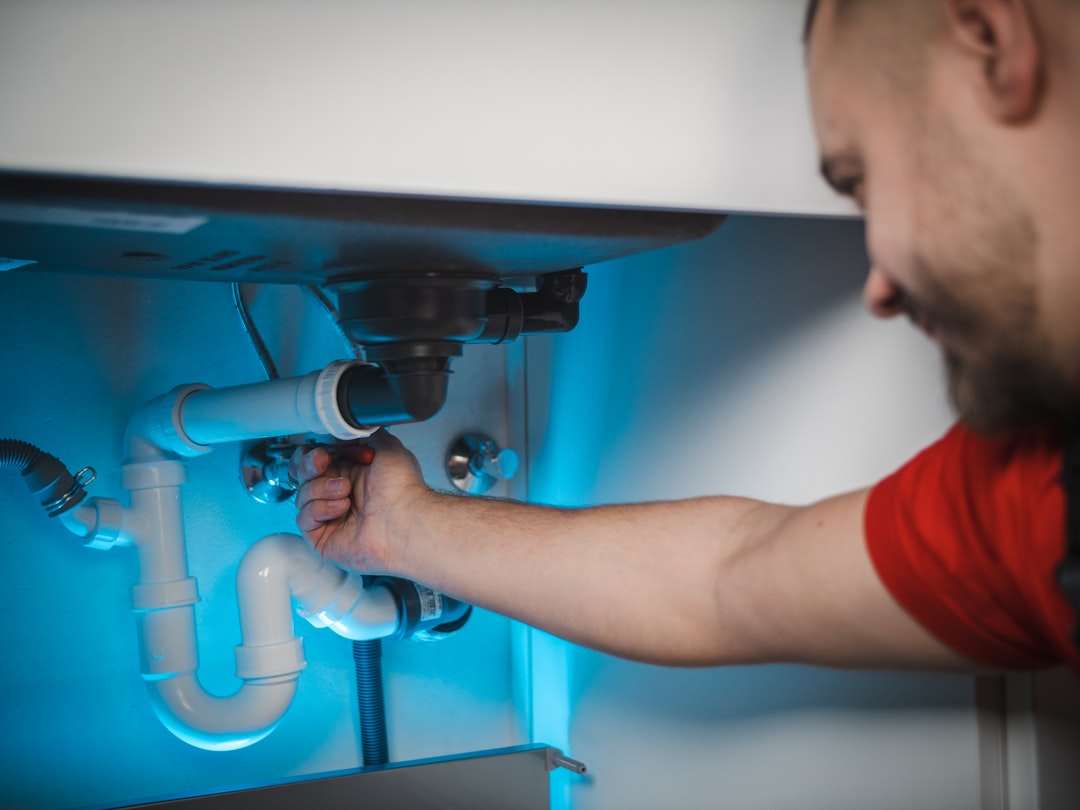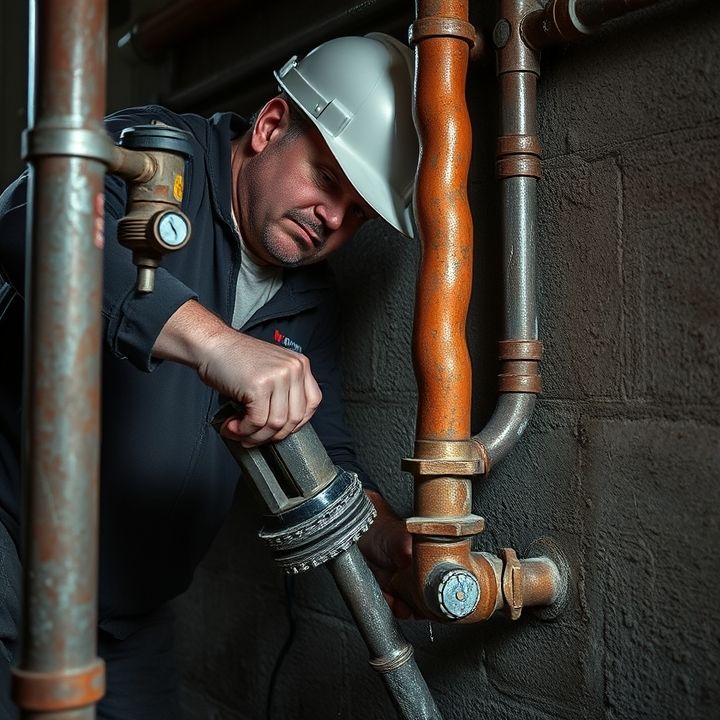Table of Contents
- Introduction
- Freezing temperatures causing pipe expansion
- High water pressure leading to stress on pipes
- Poor installation practices and faulty fixtures
- Corrosion and deterioration of piping materials
- Tree root intrusion into sewer lines
- Abrupt changes in water flow or pressure
- Aging infrastructure and pipe material degradation
- Improper drainage leading to water accumulation
- Conclusion
- Frequently Asked Questions
Introduction
Pipes are the lifelines of our homes, silently working to provide us with water, heating, and sanitation. Yet, when they burst, they can unleash a torrent of chaos, damaging walls, floors, and cherished belongings. Understanding the most common causes of pipe bursts is essential for every homeowner, as it empowers us to take proactive measures to avert disaster.
From freezing temperatures that cause water to expand, to corrosion lurking in older systems, the reasons behind these stressful events vary widely. This article delves into the intricate world of plumbing failures, helping you pinpoint vulnerabilities in your home’s plumbing system.
By identifying the hidden culprits that lead to pipe bursts, you can implement effective prevention strategies that not only save you time and money but also provide peace of mind. Let’s unravel this mystery and equip ourselves with the knowledge necessary to safeguard our homes!
Freezing temperatures causing pipe expansion
One of the most common causes of pipe bursts is freezing temperatures, which can lead to the expansion of water within pipes. When water freezes, it expands by approximately 9 percent. This expansion exerts significant pressure on the walls of the pipe, which can ultimately result in cracks or complete failure.
During winter months, particularly in regions that experience below-freezing temperatures, this phenomenon becomes increasingly prevalent. Pipes that are poorly insulated or located in unheated areas, such as basements and crawl spaces, are especially vulnerable.
As the temperature drops, the risk of freezing increases, and it is crucial to monitor vulnerable pipes. Homeowners may mitigate this risk by insulating exposed pipes, allowing faucets to drip during extreme cold, and maintaining a consistent indoor temperature.
The consequences of a burst pipe can be severe, leading to water damage, mold growth, and costly repairs. Understanding how freezing temperatures contribute to pipe expansion is essential for preventing such issues and ensuring the integrity of plumbing systems.
High water pressure leading to stress on pipes
High water pressure is one of the leading causes of pipe bursts in both residential and commercial plumbing systems. When water pressure exceeds the recommended levels, it places excessive stress on the pipes, which can result in wear and tear over time. Pipes are designed to withstand a certain amount of pressure, but when this limit is exceeded, they can weaken and eventually fail.
The sources of high water pressure can vary. They may include issues such as a malfunctioning pressure regulator, an increase in municipal water supply pressure, or even the installation of larger pumps in certain systems. As water flows through the pipes, this increased pressure can cause joints to separate and seams to rupture, leading to leaks and, ultimately, bursts.
Homeowners and property managers should regularly monitor water pressure levels and address any discrepancies promptly. Utilizing pressure-reducing valves can help maintain optimal pressure and protect plumbing systems from the damaging effects of excessive force.
Poor installation practices and faulty fixtures
Poor installation practices and faulty fixtures are significant contributors to pipe bursts in residential and commercial plumbing systems. When pipes are installed without proper techniques, such as ensuring correct alignment, securing joints, and using appropriate fittings, they become vulnerable to leaks and bursts. For instance, using the wrong type of materials or fittings can create weak points in the plumbing system.
Additionally, the quality of fixtures plays a crucial role in the system’s overall integrity. Fixtures that are damaged or defective can lead to increased pressure and stress on the pipes, ultimately resulting in failure. If a fixture is not rated for the pressure or flow it encounters, it may malfunction, causing water to escape and potentially leading to a burst.
Moreover, inadequate training or oversight during the installation process can result in overlooked details that compromise the plumbing system’s durability. Regular inspections and maintenance are vital in identifying issues with installations and fixtures before they escalate into serious problems.
Corrosion and deterioration of piping materials
Corrosion and deterioration of piping materials are significant contributors to pipe bursts. Over time, pipes made of metal, such as iron or copper, can corrode due to chemical reactions with water and other substances. This corrosion weakens the structural integrity of the pipes, making them more susceptible to leaks and bursts.
Deterioration can also occur due to environmental factors such as temperature fluctuations, which can cause materials to expand and contract, leading to stress fractures.
Additionally, biological factors, including the growth of bacteria or algae, can exacerbate the deterioration of pipes, particularly in systems that manage wastewater.
Plastic piping materials, while generally resistant to corrosion, can still degrade due to UV exposure or chemical interactions, diminishing their effectiveness over time.
Regular inspection and maintenance are crucial for identifying early signs of corrosion and deterioration, which can help prevent costly pipe bursts and ensure the longevity of plumbing systems.
Tree root intrusion into sewer lines
Tree root intrusion into sewer lines is one of the most common causes of pipe bursts. As trees grow, their roots naturally seek out sources of moisture and nutrients, which often leads them to underground pipes. Sewer lines, especially those made from clay or cast iron, can be particularly vulnerable to this intrusiveness. When roots invade these pipes, they can cause blockages that result in increased pressure within the plumbing system.
If left unaddressed, this pressure can lead to cracks, leaks, or even complete pipe failure. The roots may infiltrate the joints or weak points of the pipes, causing further deterioration. Signs of root intrusion can include slow drains, gurgling sounds in the plumbing, or even sewage backups. Homeowners may notice an unusually lush area of grass above the sewer line, indicating the presence of roots.
Regular inspections and maintenance can help detect root intrusion early. If found, professionals can use various techniques, such as drain cleaning or root cutting, to mitigate the issues caused by tree roots in sewer lines, preventing potentially costly repairs in the future.
Abrupt changes in water flow or pressure
Abrupt changes in water flow or pressure can be significant factors contributing to pipe bursts. These sudden shifts can arise from various situations, including the rapid opening or closing of valves, malfunctioning pumps, or even fluctuations in the municipal water supply. When water pressure increases unexpectedly, it puts immense stress on the pipes, particularly older or weakened ones, which may not be equipped to handle such surges.
Additionally, a sudden drop in pressure can create a vacuum effect, causing pipes to collapse or draw in debris that can lead to blockages and eventual bursts.
Understanding the dynamics of water flow and pressure is crucial for both homeowners and professionals in the plumbing industry. Regular maintenance, such as checking for leaks and ensuring that pressure regulators are functioning properly, is essential in preventing the damaging effects of these abrupt changes. Proactively monitoring and managing water systems can help mitigate the risks associated with pressure fluctuations, safeguarding both the infrastructure and the properties connected to it.
Aging infrastructure and pipe material degradation
Aging infrastructure is a significant contributor to the occurrence of pipe bursts in residential and commercial settings. As pipes age, the materials used in their construction can degrade over time due to various environmental factors. This degradation can lead to a loss of structural integrity, making pipes more susceptible to breaks.
Additionally, older pipes are often made from materials that may not withstand the pressures and demands of modern water systems. For example, materials like cast iron and galvanized steel, commonly used in the past, can corrode and weaken, resulting in leaks and bursts.
Furthermore, external factors such as ground movement, tree roots, and temperature fluctuations can exacerbate these issues, leading to further deterioration. Regular inspections and maintenance of aging infrastructure are crucial to identify potential weaknesses before they lead to catastrophic failures. Understanding the relationship between aging infrastructure and pipe material degradation can help property owners and municipalities develop better management strategies to prevent costly water damage.
Improper drainage leading to water accumulation
Improper drainage is a significant factor that can lead to water accumulation, which in turn increases the risk of pipe bursts. When drainage systems are not functioning optimally, water can pool in unwanted areas, exerting excessive pressure on pipes. This may occur due to clogged drains, which can cause water to back up and overflow. Additionally, if drainage systems are poorly designed or not adequately maintained, they may fail to direct water away from vulnerable structures.
Another contributing factor is the terrain and landscaping around a property. If the ground slopes toward the building rather than away from it, water can accumulate near the foundation, saturating the surrounding soil and putting pressure on underground pipes. Over time, the weight of accumulated water can lead to pipe deformation or rupture. Furthermore, during heavy rainfall, inadequate drainage systems can become overwhelmed, exacerbating the problem of water accumulation and increasing the likelihood of damaging bursts.
Conclusion
In conclusion, understanding the common causes of pipe bursts is essential for homeowners and property managers alike. From the damaging effects of freezing temperatures to the hidden threats posed by tree roots, awareness and prevention are key in safeguarding plumbing systems. Regular maintenance, timely inspections, and suitable preventive measures such as insulating pipes and monitoring water pressure can significantly reduce the risk of unexpected bursts. Aging infrastructure and improper drainage systems can exacerbate these issues, making it even more vital to stay proactive. Don’t wait for a pipe burst to disrupt your life; take action now to protect your home. If you suspect potential problems or need expert assistance, don’t hesitate to call 573-555-2121 for reliable plumbing help. Our professionals are ready to assist you in preventing costly repairs and ensuring your plumbing system remains in top shape.

